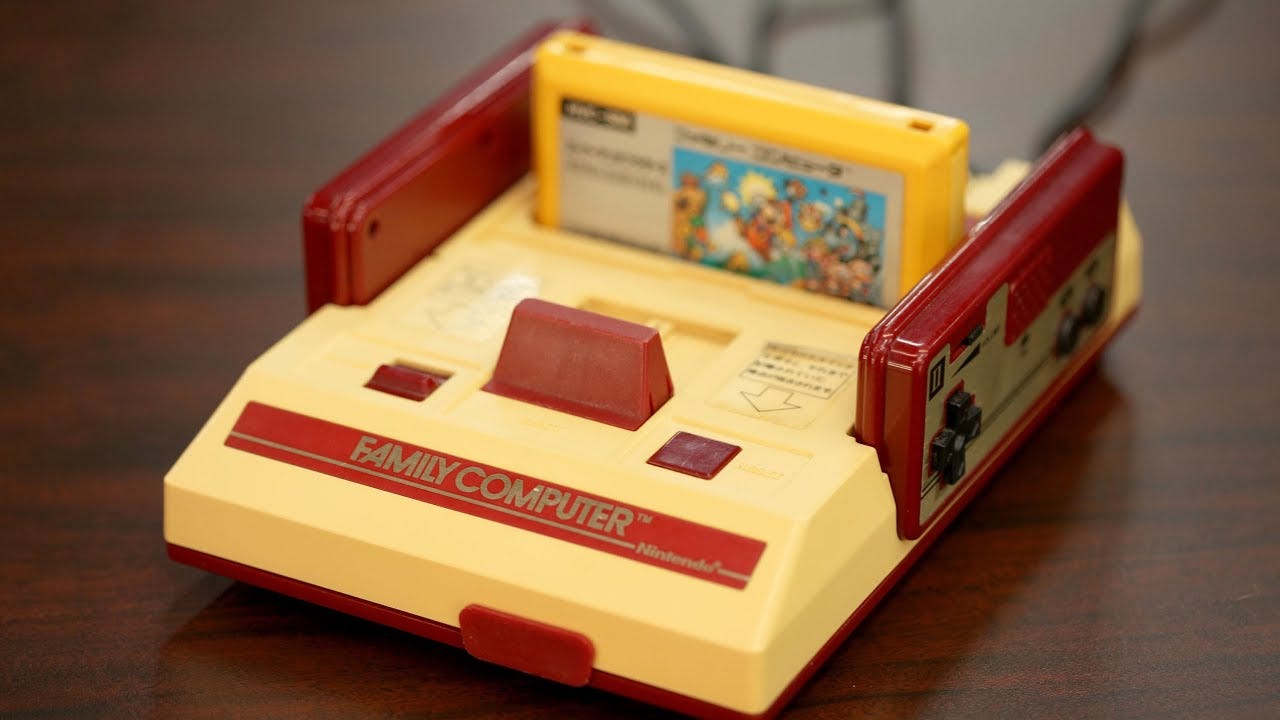On This Day in 1983: How Nintendo Rewired the Future of Gaming
Nintendo’s Family Computer turned failure into the foundation of a gaming revolution
An Idea Born Over Whisky and Wires
On 15 July 1983, something small, plastic and red-and-white shuffled humbly into Japanese department stores: the Nintendo Family Computer, or Famicom. It was clunky, light on features, and riddled with bugs. Yet this tiny console, conceived in a haze of ambition, corporate drinking habits and late-night phone calls, would light the fuse on a global cultural explosion. It would become the moment when the world began to play together in their living rooms, and gaming was no longer just about arcades or pinball machines in the corners of smoke-filled bars.
The Famicom's origin is not a story of instant brilliance. It is a story of human grit, failure, humility and insane pressure. And for me, it defines something vital: that progress never arrives polished. It arrives sparking and short-circuiting.
Hard Lessons from a Faulty Launch
Nintendo had dipped a toe into gaming before 1983. But arcade cabinets and coin-fed distractions were not enough. The company’s President at the time rang up his hardware designer on a boozy November evening in 1981 and demanded something revolutionary: a home console using cartridges rather than in-built games. This way, players could buy one machine, but endlessly refresh the experience by changing the software.
The concept was radical. But radical often stumbles on first contact with reality.
By the time Famicom hit the shelves, it was already broken. Hundreds of machines were returned within weeks. It couldn’t keep up with the very games designed to run on it. Donkey Kong, their crown jewel, froze mid-jump. A plumber stranded in a digital purgatory of falling barrels and dead pixels. The fault wasn’t one of manufacture, but of design; the circuitry couldn’t cope.
Yet what did Nintendo do? They recalled the lot. They admitted defeat and fixed it. Not quietly. Not behind closed doors. Openly. Massively. Publicly. And at great expense. This, to me, is the true marvel. Not the Famicom’s final form. But the courage to course-correct in front of the world.
How Simplicity Became Genius
What came back to the shelves in 1984 was still no technological marvel. It was basic, even Spartan. No keyboard, no disk drive, no screen, and barely any memory. It looked like a toy. That was the point.
Nintendo knew they had to win over parents. The Famicom was designed to be unintimidating. A television plug-in, a couple of buttons, and games that made you grin. Crucially, its red and white shell, a design call made on a whim after its creator and company president spotted a colourful TV advert, became iconic. It made the machine feel joyful before it was even switched on.
Its games were not just digital distractions. They were proof-of-concept for the new era. Super Mario Bros, in particular, was a masterstroke. No longer trapped in a single screen like previous titles, it scrolled sideways, introducing us to level design that resembled adventure. It wasn’t just a game. It was an invitation.
By 1984, the Famicom had sold over a million units. It owned 90% of Japan’s home console market. And it had earned it.
Mario, America and the Resurrection of an Industry
Japan was one thing. America was another. In the early 1980s, the US video game industry was a corpse. Over-saturated, poorly regulated, and stinking of cynicism. Nintendo walked into this graveyard with one thing others lacked: restraint.
They rebranded the Famicom as the Nintendo Entertainment System. Gave it a subdued, serious look. And bundled it with a game no one had seen before: Super Mario Bros. That changed everything. Overnight.
Stores were reluctant at first. Memories of cheap knock-offs and discount bins full of plastic ghosts haunted the retail landscape. But Nintendo didn’t rush. They let word of mouth build. They let Mario do the talking.
Six months later, over three million NES consoles were sold in America. Within a year, it was six million. By then, nine out of ten consoles sold in the country bore Nintendo’s logo.
What began with a single flawed idea in Kyoto became a resurrection. The American gaming industry had collapsed. Nintendo rebuilt it, pixel by pixel.
Legacy Forged in Silicon and Courage
Masayuki Uemura, the man behind the hardware, returned to the factory floor 20 years later to witness the final Famicom roll off the production line. It wasn’t being boxed for sale, but for a museum. That is where it belongs.
Because this was a flag planted in a new world. It taught the industry that accessibility beats power, that character trumps spectacle, and that entertainment can be both playful and profound.
Today, Nintendo still draws on the bloodline of the Famicom. The Switch, the Wii, even the DS, all carry echoes of that small, flawed, red-and-white machine.
And on this day, 15 July, we remember the date not because of what was perfect, but because of what was brave. The Famicom didn’t just change games. It reminded us that creativity begins in chaos. That’s not something to fear. That’s where all good stories start.


